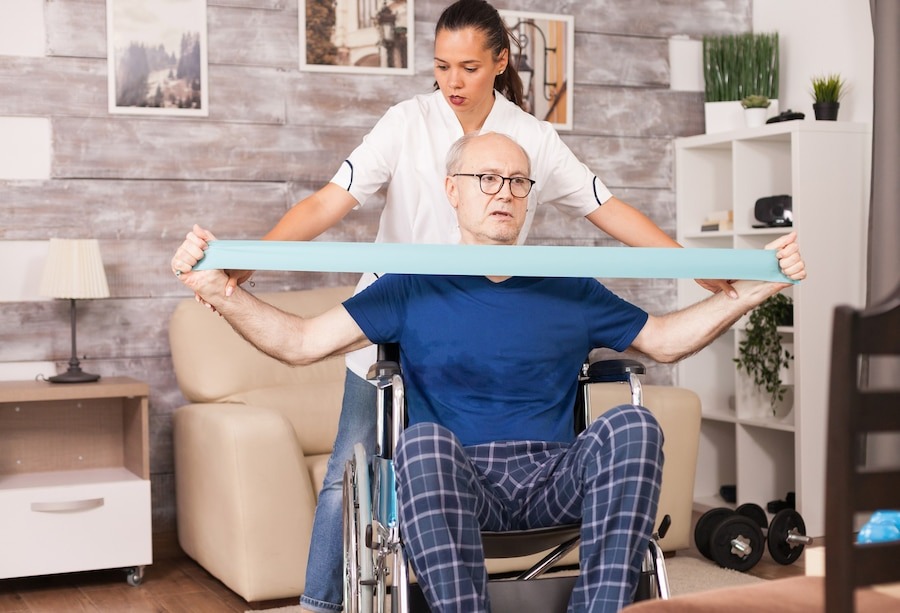Living with a spinal cord injury can feel like navigating an entirely new world. While challenging, recovery is possible with the right tools and support. Two key pillars of spinal cord injury rehabilitation are spinal cord injury occupational therapy and spinal cord injury physiotherapy, each playing distinct yet interconnected roles.
What is Spinal Cord Injury?
A spinal cord injury (SCI) refers to damage to the spinal cord, which can disrupt communication between the brain and body. This may result in partial or complete loss of movement, sensation, and function below the site of injury.
The Importance of Rehabilitation
Rehabilitation is crucial for rebuilding independence, minimising secondary complications, and promoting emotional well-being. But why are both occupational therapy and physiotherapy necessary? Let’s explore.
Understanding Spinal Cord Injury Occupational Therapy
Occupational therapy focuses on helping individuals regain their ability to perform daily activities. It’s not just about physical tasks; it’s about restoring confidence and independence.
Restoring Daily Living Skills
Think about the seemingly simple act of brushing your teeth or preparing a meal. After an SCI, these tasks may feel monumental. Occupational therapists work closely with patients to rebuild these skills, using assistive devices and tailored strategies.
Adaptation to New Realities
When life throws a curveball, adaptation becomes key. Whether it’s using a wheelchair or modifying a home, occupational therapy helps patients adjust to their new circumstances.
Emotional Support and Adjustment
SCI doesn’t just affect the body—it impacts the mind too. spinal cord injury occupational therapy includes counselling and support to help patients navigate emotional challenges, fostering resilience.
The Key Aspects of Spinal Cord Injury Physiotherapy
Enhancing Physical Mobility
Physiotherapy, on the other hand, zeroes in on restoring movement. Through exercises and techniques, it helps improve flexibility, strength, and coordination.
Preventing Muscle Atrophy
After an SCI, immobility can lead to muscle wasting. Physiotherapists design programmes to maintain muscle tone and prevent atrophy, ensuring long-term functionality.
Pain Management Techniques
Dealing with pain is often a part of the SCI journey. Physiotherapists employ methods like massage, hydrotherapy, and electrical stimulation to alleviate discomfort.
Why a Combined Approach is Essential: Complementary Roles of Both Therapies
Think of occupational therapy and physiotherapy as two sides of the same coin. While one focuses on physical function, the other addresses daily living and emotional well-being. Together, they create a comprehensive recovery plan.
Holistic Rehabilitation Outcomes
Physical and Emotional Well-Being
Recovery isn’t just about walking again; it’s about living fully. A combined approach supports both physical health and emotional resilience.
Community Integration and Independence
Rehabilitation goes beyond the clinic walls. By working together, occupational and physiotherapy enable individuals to reintegrate into their communities and lead fulfilling lives.
Barriers to Rehabilitation and How to Overcome Them
Despite the many benefits of combined therapy, there can be challenges when it comes to accessing and sticking with the treatment.
Overcoming Physical Barriers
One common barrier is the physical limitations that may initially prevent a person from fully participating in therapy. For example, extreme pain or muscle weakness can make it difficult to engage in certain exercises. This is where a skilled physiotherapist can help adjust therapy to the individual’s physical capacity, ensuring that each step of recovery is both manageable and progressive.
Addressing Psychological Barriers
Psychological hurdles, like depression or a sense of helplessness, can also impede recovery. The emotional toll of an SCI can be profound. Occupational therapy steps in here by offering mental health support, providing patients with tools to cope with anxiety, and helping them adjust to a new lifestyle. This emotional resilience is just as important as physical strength.
Financial and Logistical Challenges
The cost of continuous rehabilitation can sometimes discourage people from pursuing the full benefits of therapy. However, many facilities and organisations offer financial assistance or sliding scale fees for therapy services, and some insurance policies cover SCI-related treatments. Knowing where to look for support is essential in ensuring that rehabilitation continues without interruption.
The Importance of Support Networks During Recovery
Spinal cord injury recovery doesn’t happen in isolation. Having a strong support network can significantly enhance the process.
The Role of Family and Friends
Support from family and friends is critical for long-term recovery. They not only assist in practical ways, like helping with mobility or meal preparation, but they also provide emotional support. When patients feel encouraged and cared for, their confidence improves, which can make a substantial difference in their rehabilitation journey.
Community Support and Peer Mentoring
Joining support groups or engaging in peer mentoring with other individuals who’ve gone through a similar recovery process can also be incredibly valuable. These groups often provide both emotional and practical advice, and sharing stories of overcoming challenges can give patients the hope they need to keep pushing forward.
Conclusion
Rehabilitation after a spinal cord injury is no small feat. It requires grit, determination, and the right support system. Combining spinal cord injury occupational therapy and spinal cord injury physiotherapy ensures a holistic recovery, addressing both the body and mind. With this dual approach, individuals can rebuild their lives, rediscover their independence, and embrace the future with confidence.
